TRUSOPT Preservative Free Eye drops Single Dose Unit, 60 Pack
Treatment of Glaucoma
Prescription Required
Vet Prescriptions accepted
Active Ingredient: Dorzolamide 20mg
- Treatment of Glaucoma
- The active substance is dorzolamide
- Can used in dogs and cats with Vet Prescription
Original price was: £40.00.£34.50Current price is: £34.50.
CompareCompare- Treatment of Glaucoma
- The active substance is dorzolamide
- Can used in dogs and cats with Vet Prescription
- Description
- Brand
- How To Use
- Product Details
- Side Effects
- Ingredients
- Reviews (4)
- Questions & Answers
TRUSOPT Preservative Free Eye drops Single Dose Unit, 60 Pack
What TRUSOPT PRESERVATIVE FREE EYE DROPS is and what it is used for?
TRUSOPT Preservative Free Eye drops Single Dose Unit contains dorzolamide which belongs to a group of medicines called “carbonic anhydrase inhibitors”.
TRUSOPT Preservative Free Eye drops Single Dose Unit is prescribed to lower raised pressure in the eye and to treat glaucoma. This medicine can be used alone or in addition to other medicines which lower the pressure in the eye (so-called beta-blockers).
TRUSOPT Preservative Free Eye drops Single Dose Unit can be used to treat cats and dogs with eye conditions when a Vet prescription is issued.
TRUSOPT Preservative-Free is a sterile solution that does not contain a preservative. The solution from one individual single-dose container is to be used immediately after opening for administration to the affected eye(s)
Further information on Glaucoma, Click Here
What is Glaucoma?
Glaucoma is a common eye condition where the optic nerve, which connects the eye to the brain, becomes damaged.
It’s usually caused by fluid building up in the front part of the eye, which increases pressure inside the eye.
Glaucoma can lead to loss of vision if it’s not diagnosed and treated early.
It can affect people of all ages, but is most common in adults in their 70s and 80s.
Glaucoma does not usually cause any symptoms to begin with.
It tends to develop slowly over many years and affects the edges of your vision (peripheral vision) first.
For this reason, many people do not realise they have glaucoma, and it’s often only picked up during a routine eye test.
If you do notice any symptoms, they might include blurred vision, or seeing rainbow-coloured circles around bright lights.
Both eyes are usually affected, although it may be worse in 1 eye.
Very occasionally, glaucoma can develop suddenly and cause:
Visit an opticians or a GP if you have any concerns about your vision.
If you have glaucoma, early diagnosis and treatment can help stop your vision getting worse.
Without treatment, glaucoma can eventually lead to blindness.
If you develop symptoms of glaucoma suddenly, go to your nearest eye casualty unit or A&E as soon as possible.
This is a medical emergency that may require immediate treatment.
There are several different types of glaucoma.
The most common is called primary open angle glaucoma. This tends to develop slowly over many years.
It’s caused by the drainage channels in the eye becoming gradually clogged over time.
Other types of glaucoma include:
- acute angle closure glaucoma – an uncommon type caused by the drainage in the eye becoming suddenly blocked, which can raise the pressure inside the eye very quickly
- secondary glaucoma – caused by an underlying eye condition, such as inflammation of the eye (uveitis)
- childhood glaucoma (congenital glaucoma) – a rare type that occurs in very young children, caused by an abnormality of the eye
Glaucoma can occur for a number of reasons.
Most cases are caused by a build-up of pressure in the eye when fluid is unable to drain properly.
This increase in pressure then damages the nerve that connects the eye to the brain (optic nerve).
It’s often unclear why this happens, although certain things can increase the risk, including:
- your age – glaucoma becomes more common as you get older
- your ethnicity – people of African, Caribbean or Asian origin are at a higher risk
- your family history – you’re more likely to develop glaucoma if you have a parent or sibling with the condition
- other medical conditions – such as short-sightedness, long-sightedness and diabetes
It’s not clear whether you can do anything to prevent glaucoma, but having regular eye tests should pick it up as early as possible.
TESTS FOR GLAUCOMA
Glaucoma can usually be detected during a routine eye test at an opticians, often before it causes any noticeable symptoms.
The tests are carried out in the opticians by an optometrist.
You should have a routine eye test at least every 2 years.
Find out if you’re eligible for free NHS eye tests
Several quick and painless tests can be carried out to check for glaucoma, including vision tests and measurements of the pressure inside your eye.
If tests suggest you have glaucoma, you should be referred to a specialist eye doctor (ophthalmologist) to discuss treatment.
It’s not possible to reverse any loss of vision that occurred before glaucoma was diagnosed, but treatment can help stop your vision getting worse.
The treatment recommended for you will depend on the type of glaucoma you have, but the options are:
- eyedrops – to reduce the pressure in your eyes
- laser treatment – to open up the blocked drainage tubes or reduce the production of fluid in your eyes
- surgery – to improve the drainage of fluid
You’ll also probably need regular appointments to monitor your condition and check the treatment is working.
TRUSOPT Preservative Free Eye drops Single Dose Unit Reviews
After using TRUSOPT Preservative Free Eye drops Single Dose Unit, it’s helpful to let others know about your experience. Reviews of an item help other users know that medicines received have helped the condition it is claimed for, how well the treatment worked or any issues to be aware of. We invite our users to leave a review of both their treatment and of the service provided. Click on the reviews tab to see if there has been feedback on this item.
Price of TRUSOPT Preservative Free Eye drops Single Dose Unit in UK
Where to buy TRUSOPT Preservative Free Eye drops Single Dose Unit
TRUSOPT Preservative Free Eye drops Single Dose Unit is available to buy with a prescription at Dock Pharmacy Essex UK, UK Online Pharmacy.
Brand
Trusopt
How To Use
How to use TRUSOPT Preservative-Free
Always use this medicine exactly as your doctor has told you. Check with your doctor or pharmacist if you are not sure. The appropriate dosage and duration of treatment will be established by your doctor.
When this medicine is used alone, the recommended dose is one drop in the affected eye(s) in the morning, in the afternoon and in the evening.
If your doctor has recommended you use this medicine with a beta-blocker eye drop to lower eye pressure, then the recommended dose is one drop of TRUSOPT Preservative-Free in the affected eye(s) in the morning and in the evening.
If you are using TRUSOPT Preservative-Free with another eye drop, the drops should be instilled at least 10 minutes apart.
Do not change the dose of the drug without consulting your doctor.
Do not allow the tip of the single dose container to touch the eye or areas around the eye. It may become contaminated with bacteria that can cause eye infections leading to serious damage of the eye, even loss of vision. To avoid possible contamination of the single dose container, wash your hands before using this medicine and keep the tip of the single dose container away from contact with any surface.
Instructions for use:
The solution from one individual single dose container of TRUSOPT Preservative-Free is to be used immediately after opening for administration to the affected eye(s). Since sterility cannot be maintained after the individual single dose container is opened, a new container must be opened prior to each use and must be discarded immediately after administration. Each single dose container contains enough solution for both eyes.
1. Open the foil sachet which contains the individual single dose containers.
2. First wash your hands then break off one single dose container from the strip and twist open the top of the single dose container as shown.
3. Tilt your head back and pull your lower eyelid down slightly to form a pocket between your eyelid and eye as shown.
4. Put one drop in the affected eye(s) as directed by your doctor.
5. After putting the drop into the eye, throw away the used single dose container even if there is solution remaining to avoid contamination of the preservative free solution.
6. Store the remaining containers in the foil sachet; the remaining containers must be used within 15 days after opening of the sachet. If there are any containers left 15 days after opening the sachet they should be safely thrown away and a fresh sachet opened. It is important to continue to use the eye drops as prescribed by your doctor.
If you use more TRUSOPT Preservative-Free than you should
If you put too many drops in your eye or swallow any of the contents of the container, you should contact your doctor immediately.
If you forget to use TRUSOPT Preservative-Free
It is important to take this medicine as prescribed by your doctor. If you miss a dose, take it as soon as possible. However, if it is almost time for the next dose, skip the missed dose and go back to your regular dosing schedule.
Do not take a double dose to make up for the forgotten dose.
If you stop using TRUSOPT Preservative-Free
If you want to stop using this medicine talk to your doctor first. If you have any further questions on the use of this product, ask your doctor or pharmacist.
Product Details
What you need to know before you use TRUSOPT Preservative-Free
Do not use TRUSOPT Preservative-Free
- if you are allergic to dorzolamide hydrochloride or any of the other ingredients of this medicine (listed in section 6).
- if you have severe kidney impairment or problems, or a prior history of kidney stones.
If you are not sure whether you should use this medicine, contact your doctor or pharmacist.
Warnings and precautions
Talk to your doctor or pharmacist before using TRUSOPT Preservative-Free.
Tell your doctor or pharmacist about any medical problems you have now or have had in the past, including eye problems and eye surgeries, and about any allergies to any medications.
If you develop any eye irritation or any new eye problems such as redness of the eye or swelling of the eyelids, contact your doctor immediately.
If you suspect that TRUSOPT Preservative-Free is causing an allergic reaction (for example, skin rash, severe skin reaction, or itching), stop using this medicine and contact your doctor immediately.
If you wear contact lenses, you should consult your doctor before using TRUSOPT Preservative-Free.
Use in children
TRUSOPT (preserved formulation) has been studied in infants and children less than 6 years of age who have raised pressure in the eye(s) or have been diagnosed with glaucoma. For more information talk to your doctor.
Use in elderly
In studies with TRUSOPT (preserved formulation), the effects of this medicine were similar in both elderly and younger patients.
Use in patients with liver impairment
Tell your doctor about any liver problems you now have or have suffered from in the past.
Other medicines and TRUSOPT PRESERVATIVE-FREE
Tell your doctor or pharmacist if you are using, have recently used or might use any other medicines (including eye drops). This is particularly important if you are taking another carbonic anhydrase inhibitor such as acetazolamide, or a sulpha drug.
Pregnancy and breast-feeding
If you are pregnant or breast-feeding, think you may be pregnant or are planning to have a baby, ask your doctor or pharmacist for advice before taking any medicine.
Pregnancy
You should not use this medicine during pregnancy. Tell your doctor if you are pregnant or intend to become pregnant.
Breast-feeding
You should not use this medicine during breast-feeding. Tell your doctor if you are breast-feeding or intend to breast-feed.
Driving and using machines
No studies on the effects on the ability to drive or use machines have been performed. There are side effects associated with TRUSOPT Preservative-Free, such as dizziness and blurred vision, which may affect your ability to drive and/or operate machinery. Do not drive or operate machinery until you feel well or your vision is clear.
Side Effects
Like all medicines, this medicine can cause side effects, although not everybody gets them.
If you develop allergic reactions including hives, swelling of the face, lips, tongue, and/or throat which may cause difficulty in breathing or swallowing, you should stop using this medicine and seek immediate medical advice.
The following side effects have been reported with TRUSOPT either during clinical trials or during post-marketing experience:
Very common side effects: (affects more than 1 user in 10)
Burning and stinging of the eyes.
Common side effects: (affects 1 to 10 users in 100)
Disease of the cornea with sore eye and blurred vision (superficial punctuate keratitis), discharge with itching of the eyes (conjunctivitis), irritation/inflammation of the eyelid, blurred vision, headache, nausea, bitter taste, and fatigue.
Uncommon side effects: (affects 1 to 10 users in 1,000)
Inflammation of the iris.
Rare side effects: (affects 1 to 10 users in 10,000)
Tingling or numbness of the hands or feet, temporary shortsightedness which may resolve when treatment is stopped, development of fluid under the retina (choroidal detachment, following filtration surgery), eye pain, eyelid crusting, low pressure in the eye, swelling of the cornea (with symptoms of visual disturbances), eye irritation including redness, kidney stones, dizziness, nose bleed, throat irritation, dry mouth, localized skin rash (contact dermatitis), severe skin reactions, allergic type reactions such as rash, hives, itching, in rare cases possible swelling of the lips, eyes and mouth, shortness of breath, and more rarely wheezing.
Not known: (frequency cannot be estimated from the available data)
Shortness of breath, foreign body sensation in eye (feeling that there is something in your eye), forceful heartbeat that may be rapid or irregular (palpitations).
Reporting of side effects
If you get any side effects, talk to your doctor, pharmacist or nurse. This includes any possible side effects not listed in this leaflet. You can also report side effects directly (see details below). By reporting side effects you can help provide more information on the safety of this medicine.
United Kingdom:
Yellow Card Scheme
or search for MHRA Yellow Card in the Google Play or Apple App Store
How to store TRUSOPT Preservative-Free
Keep this medicine out of the sight and reach of children.
Do not use the unopened sachets of this medicine after the expiry date which is stated by the six digits following EX (or EXP) on the outer carton, foil package and each single-dose container. The first two digits indicate the month; the last four digits indicate the year. The expiry date refers to the last day of that month.
Do not store above 30°C. Do not freeze.
Store in the foil sachet in order to protect from light.
You can use TRUSOPT Preservative-Free 15 days after first opening the sachet.
Discard any unused single dose containers after that time.
Discard the opened single dose container with any remaining solution immediately after first use.
Do not throw away any medicines via wastewater or household waste. Ask your pharmacist how to throw away medicines you no longer use. These measures will help protect the environment.
Ingredients
What TRUSOPT Preservative-Free contains
- The active substance is dorzolamide.
- Each ml contains 22.26 mg of dorzolamide hydrochloride equivalent to 20 mg of dorzolamide.
- The other ingredients are hydroxyethyl cellulose, mannitol, sodium citrate, sodium hydroxide, and water for injections.
Only logged in customers who have purchased this product may leave a review.
Questions and answers of the customers
There are no questions yet, be the first to ask something for this product.
Other Products From This Seller
- Validated for 2-8°C for 30 to 36 hrs*
- Perfect for long-haul flights
- Carries pens, bottles, vials and syringes
- Manufactured from excellent quality materials
£102.50
- Availability: in stock
- Validated for 2-8°C for 18 to 24hrs*
- Perfect for long haul flights
- Carries pens, bottles, vials and syringes
- Integrated digital thermometer
- Manufactured from excellent quality materials
£69.45
- Availability: in stock
- Validated for 2-8°C for 15 to 20hrs*
- Perfect for long haul flights
- Carries pens, bottles, vials and syringes
- Integrated digital thermometer
- Manufactured from excellent quality materials
£54.50
- Availability: in stock
Steglatro Tablets – Ertugliflozin Tablets available in 2 strengths:
- Steglatro 5mg Tablets – Ertugliflozin 5mg Tablets
- Steglatro 15mg Tablets – Ertugliflozin 15mg Tablets
£49.50
- Availability: in stock
Original price was: £43.20.£39.50Current price is: £39.50.
Ursodeoxycholic Acid Tablets 250mg – Cholurso Tablets, 60 Tablets Introducing Cholurso Tablets the brand name of Ursodeoxycholic Acid Tablets 250mg – Your Solution for Gallstone Management and Liver Health Ursodeoxycholic Acid 250mg Tablets is a cutting-edge pharmaceutical formulation designed to positively influence bile composition, making it a versatile solution for various health concerns. Ursodeoxycholic Acid, […]
Learn MoreOriginal price was: £43.20.£39.50Current price is: £39.50.
- Availability: in stock
£156.00 – £210.00
Please note you need insulin pen needles to use Mounjaro Injection
Mounjaro Injection – Tirzepatide Injection, 4 Pre-filled Pens
Available in 6 strengths:
- Mounjaro 2.5mg Injection
- Mounjaro 5mg Injection
- Mounjaro 7.5mg Injection
- Mounjaro 10mg Injection
- Mounjaro 12.5mg Injection
- Mounjaro 15mg Injection
Learn More
£156.00 – £210.00
- Availability: in stock
Timoptol LA Gel – Timolol Eye Gel is available in 2 strengths
- Timoptol LA 0.5% Gel
- Timoptol LA 0.25% Gel
£7.50
- Availability: in stock
Original price was: £43.50.£39.75Current price is: £39.75.
One-Alpha Drops 2mcg/1ml – Alfacalcidol Drops 2mcg/1ml
Learn MoreOriginal price was: £43.50.£39.75Current price is: £39.75.
- Availability: in stock
Original price was: £5.99.£5.39Current price is: £5.39.
Ideal for irrigating and cleansing the eye, or a wound
Learn MoreOriginal price was: £5.99.£5.39Current price is: £5.39.
- Availability: in stock
Ultimate Surefit Erection Ring Set 15222 – Constrictor Rings For Erectile Dysfunction Experience Confidence and Pleasure with the Ultimate Surefit maintenance ring set – Your Key to Intimate Well-being Introducing the Ultimate Surefit Erection Ring, a premium solution meticulously designed for those seeking to overcome the challenges of erectile dysfunction. Crafted with precision and comfort […]
Learn More£58.50
- Availability: in stock


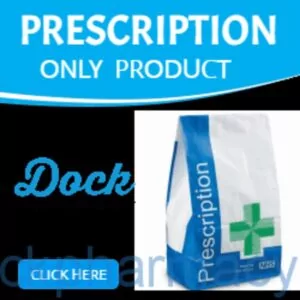
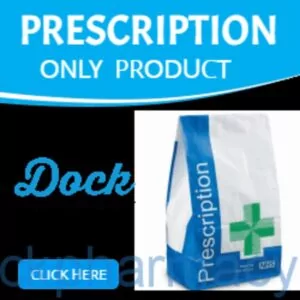

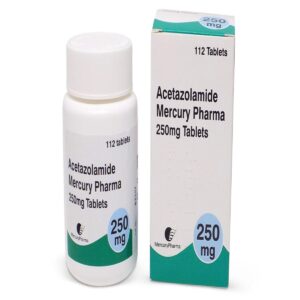





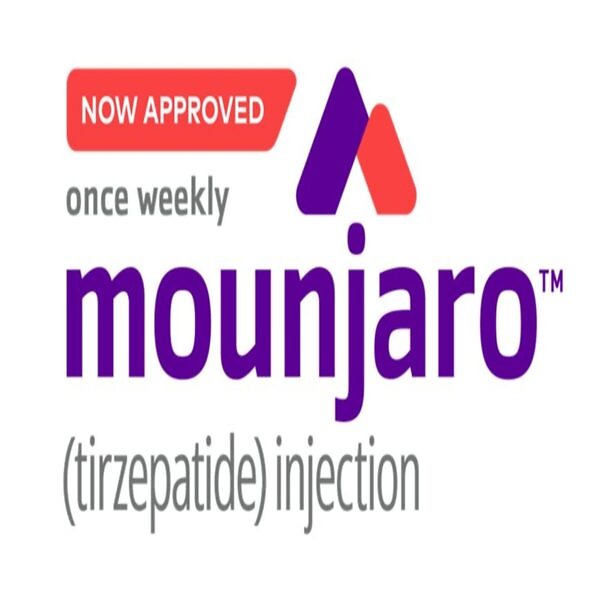


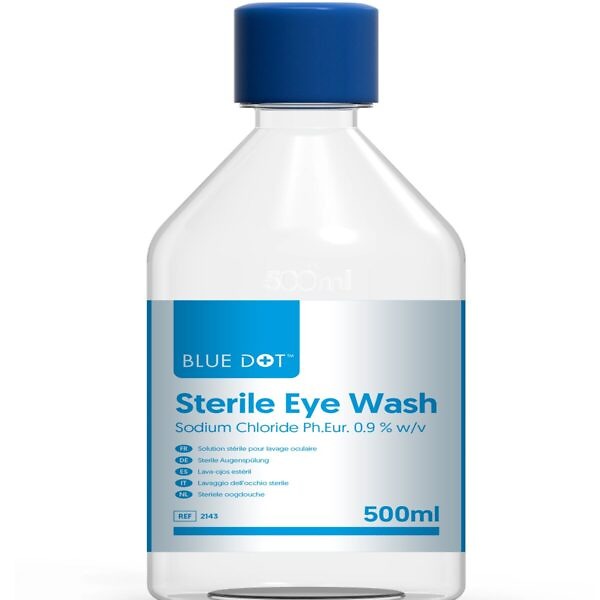
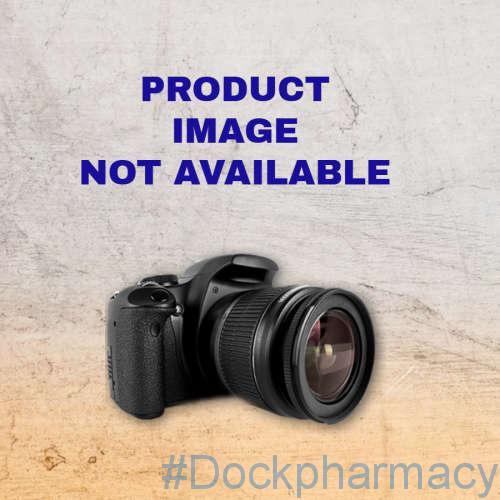

4 reviews for TRUSOPT Preservative Free Eye drops Single Dose Unit, 60 Pack
There are no reviews yet.